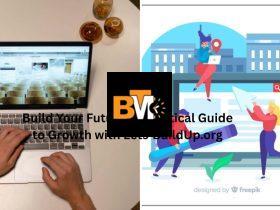Whether you’re a new knitter or a seasoned pro, using the right tools can make all the difference in how your finished projects look and feel. One essential but often overlooked item is the knit blocking mat. These mats help shape your knitting projects for a polished, professional appearance. In this guide, we’ll break down everything you need to know about knit blocking mats in a simple, easy-to-understand way.
What Are Knit Blocking Mats?
Knit blocking mats are specially designed foam or fabric surfaces that knitters use to lay out and shape their finished knitting or crochet pieces. When you finish knitting a scarf, sweater, or shawl, the edges may curl or the shape may be a bit uneven. Blocking the piece—by stretching it into shape and letting it dry—helps fix that. Blocking mats are the surface where this all happens.
These mats are often made of durable, water-resistant foam. Many come with grid lines to help you align edges and corners. They’re usually used along with rust-proof pins and sometimes with steamers or spray bottles. With the right blocking mat, you can easily make your project look store-bought, even if you’re just a beginner.
Why Do Knitters Use Blocking Mats?
Knitters use blocking mats for several important reasons. First and foremost, they help give the project its final shape. When you knit an item, the yarn may bunch up or not lay flat. Blocking allows you to stretch and arrange the fabric the way you want it to look. Mats provide a flat, secure surface for this process.
Another reason knitters use blocking mats is to maintain the size and measurements of a pattern. If you’re following a sweater pattern and your finished piece doesn’t match the measurements, it might not fit correctly. Blocking it on a mat lets you adjust the size slightly by stretching it out before it dries. This is especially useful for lace knitting, where the design often looks better after being blocked.
Additionally, blocking mats help prevent damage to your floors or furniture. Without a mat, you might pin your work to a bed or carpet, which can lead to rust stains from pins or water damage. A mat gives you a clean, safe, reusable surface specifically for this purpose.
Different Types of Knit Blocking Mats
There are several different types of blocking mats available, and each type serves a slightly different purpose depending on the kind of knitting you do. Some knitters prefer one style over another, but having a basic understanding of each type can help you make the best choice for your crafting needs.

Foam Mats
Foam mats are the most common type of knit blocking mats. They’re lightweight, easy to store, and water-resistant. Many foam mats are made from EVA (ethylene vinyl acetate), a soft and durable material. These mats provide a cushioned surface that holds pins securely without damaging your floors.
Foam blocking mats often come in sets of interlocking tiles. You can connect as many tiles as you need depending on the size of your project. This makes them ideal for both small and large pieces. Many foam mats also feature measurement grids, which are incredibly helpful for lining up your project evenly.
Grid Mats
Grid mats come with clearly printed measurement lines, usually in 1-inch or 2-inch increments. These grids are extremely helpful for precision blocking, especially if you’re working on patterns that need to be symmetrical or follow exact dimensions. If you’re knitting garments, lace shawls, or afghan squares, grid blocking mats make your life a lot easier.
They also help with aligning corners and keeping edges straight. For new knitters, using a grid mat can reduce guesswork and help you develop better control over your finishing process. It’s like having a built-in measuring tape on your workspace.
Puzzle Mats
Puzzle mats are a type of foam mat that come in interlocking pieces—just like children’s floor puzzles. These are very popular among knitters because they are flexible in size and shape. Need a large surface for a shawl? Connect multiple tiles. Just working on a small square? Use one or two tiles.
Puzzle blocking mats are also easy to store and transport. When you’re done, you can simply take them apart and stack them in a small box or tote. Many brands even come with carry bags for extra convenience. They’re great for people with limited crafting space or those who travel with their projects.
What to Look for When Buying Knit Blocking Mats
When shopping for knit blocking mats, there are several key factors to consider to ensure you’re getting the best value for your money. First, look at the material. You want mats made from durable, high-density foam that won’t warp or bend easily. This ensures they stay flat and stable, even after repeated use.
Next, check for water resistance. Blocking involves steam or water, so your mats need to be moisture-friendly. Low-quality mats can absorb water and get moldy, which is not only unpleasant but also unhygienic. Look for EVA foam or other waterproof materials.
Another important feature is the size and number of tiles. If you often work on large projects like shawls or blankets, you’ll need a set with more tiles or larger dimensions. On the other hand, if you mostly knit socks or hats, a small set may be enough.
Grid lines are also a big bonus. Not all mats have them, but those that do make it much easier to align your work accurately. Finally, make sure the mats are compatible with rust-proof T-pins, as these are the best pins to use during blocking.
How to Use Knit Blocking Mats Step-by-Step
Using knit blocking mats is a simple process, but doing it right makes all the difference. Here’s a basic step-by-step guide to blocking your project:
- Assemble your mats on a clean, flat surface. Connect as many puzzle tiles as you need to match the size of your project.
- Wet your project. This can be done by soaking it in cool water, gently squeezing out excess moisture, or spraying it with water using a bottle. Be careful not to wring it out or stretch it during this step.
- Lay your project on the mats. Carefully spread it out in the shape you want. Use the grid lines (if available) to keep the edges straight.
- Pin your project into place using rust-proof T-pins or blocking wires. Start with the corners, then work along the edges. Make sure the fabric is stretched evenly but not overly tight.
- Let it dry completely. Depending on the material and room temperature, this can take several hours or even overnight. Do not remove the pins until everything is dry.
- Unpin and enjoy. Once dry, your piece should hold its shape and look beautifully finished.
Do You Need Blocking Mats for Every Project?
Not every knitting project requires blocking, but many benefit from it. Using blocking mats depends on the type of yarn, the pattern, and how you want the final piece to look.

Best Projects to Block
Blocking is especially useful for:
- Lace shawls and wraps – Helps open up the lace and define the pattern
- Garments like sweaters and cardigans – Ensures proper fit and size
- Blankets and afghans – Helps align squares and keep edges flat
- Scarves and cowls – Reduces curling and enhances drape
When You Can Skip Blocking
There are times when blocking might not be necessary, such as:
- Heavily textured patterns like cables or bobbles, which can flatten if over-blocked
- Items made with superwash yarn, which already holds shape well
- Small accessories like dishcloths or beanies, unless they need reshaping
How Blocking Mats Help Beginners and Experts
For beginners, blocking mats provide a safe, clean, and structured surface to learn finishing techniques. The grid lines act like training wheels, and using foam mats helps you avoid pinning into your furniture. For experts, blocking mats allow for precise shaping, custom fitting, and professional results. Whether you’re new or experienced, a good set of mats is a smart investment.
Where to Buy Knit Blocking Mats in the USA
There are many places to buy knit blocking mats across the United States. You can find them in physical stores like Joann, Michaels, or Hobby Lobby, especially in the yarn and knitting sections. However, the best selection is often online. Websites like Amazon, Etsy, and KnitPicks offer a wide variety of foam mats, grid mats, and complete blocking kits with pins included. Look for sets with good reviews and detailed product descriptions. If you’re looking for an affordable, high-quality set, AmazonBasics and KnitIQ are two well-known brands loved by crafters.
The Bottom Line
Knit blocking mats may not seem like the most exciting tool in your knitting kit, but they’re one of the most important. They help you take your projects from “handmade” to “handcrafted,” giving you that crisp, clean, and professional finish every knitter wants. With so many types to choose from—foam mats, puzzle mats, and grid mats—you’re sure to find one that suits your needs.
Whether you’re a beginner working on your first scarf or an expert finishing a lace shawl, using a blocking mat ensures your project looks its best. Remember, it’s not just about knitting the piece—it’s about finishing it well. And with a good blocking mat, finishing becomes much easier. So if you want your stitches to shine and your projects to lay just right, investing in a set of high-quality knit blocking mats is a smart, simple decision.







Leave a Reply